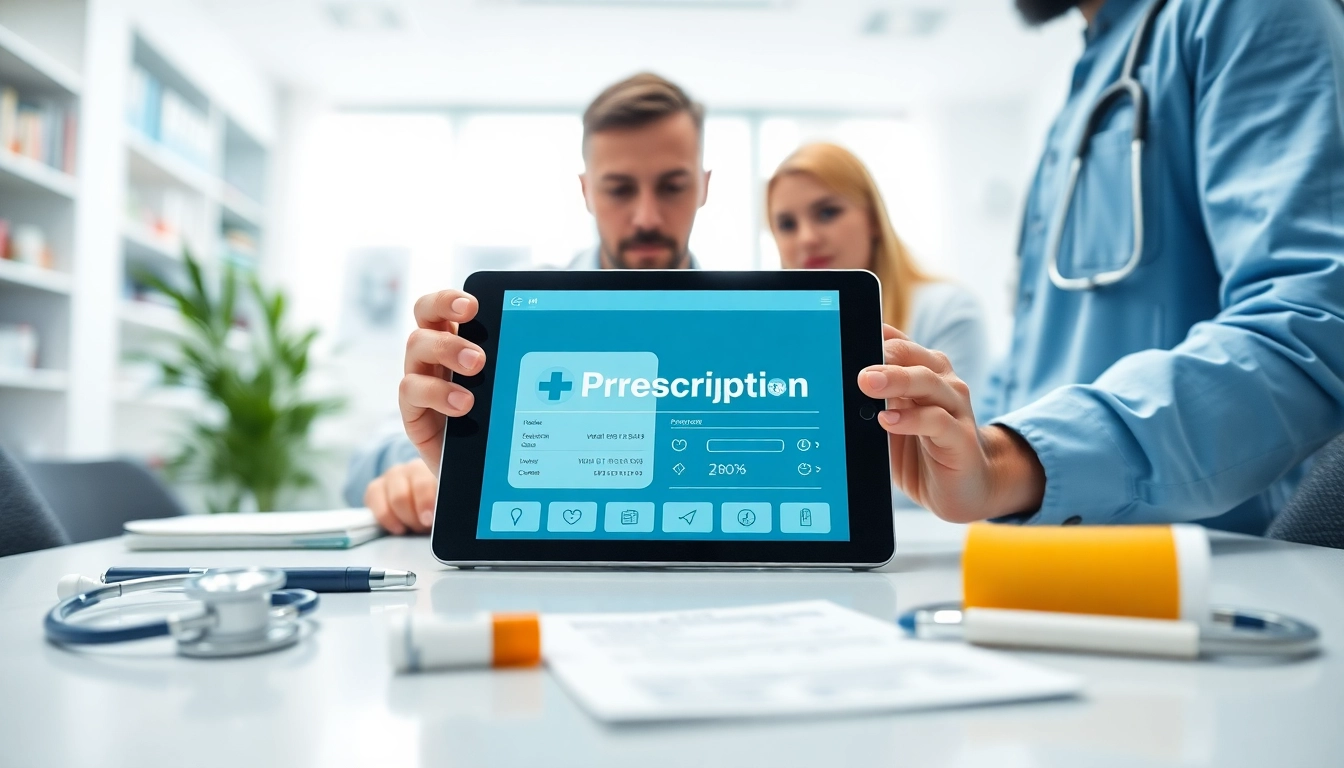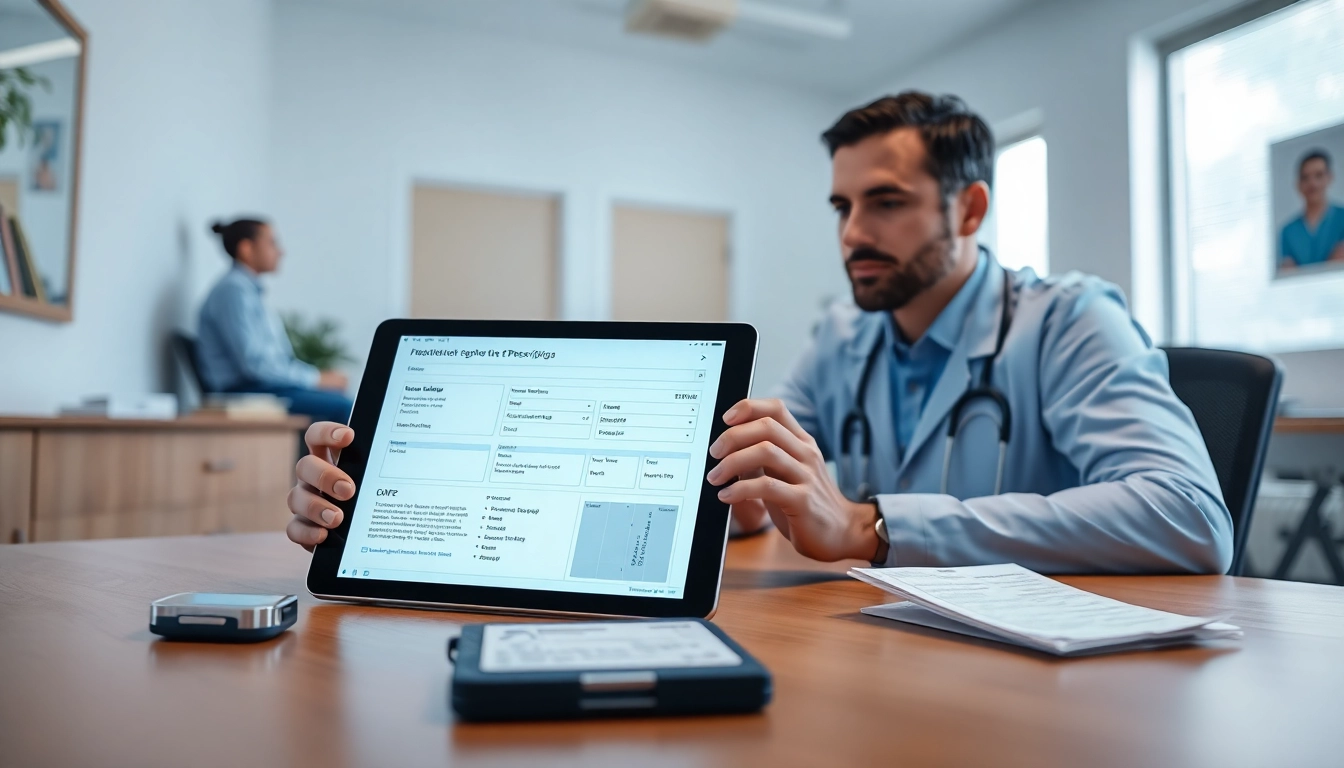Understanding ePrescription App Development
In the rapidly evolving landscape of healthcare, technology has become a vital component in enhancing patient care and improving operational efficiency. One of the pivotal advancements in this field is the development of ePrescription apps, which have fundamentally altered the way prescriptions are managed and processed. These applications play a crucial role in streamlining the prescribing process for healthcare providers while significantly enhancing patient experience. By focusing on eprescription app development, stakeholders can harness the full potential of digital health solutions to optimize prescribing practices.
What is ePrescription Technology?
ePrescription technology refers to the electronic generation and transmission of prescriptions. Instead of using traditional handwritten prescriptions, healthcare providers use digital platforms to send prescriptions directly to pharmacies, ensuring better accuracy and convenience. This technology harnesses the power of connectivity and digital data management, allowing for real-time updates, reduced errors, and improved medication adherence among patients. The adoption of ePrescription systems aligns with the broader trend of digitization in healthcare, addressing gaps in patient safety and administrative efficiency.
Core Features of ePrescription Apps
ePrescription apps are equipped with various features designed to enhance functionality and user experience. Some key features include:
- Prescription Management: The ability to create, send, and manage prescriptions effortlessly from any device, ensuring a streamlined workflow for healthcare providers.
- Drug Interaction Checks: Automated alerts for potential drug interactions, allergies, or contraindications, enhancing patient safety and reducing risks.
- Patient Profiles: Access to comprehensive patient history, including allergies, current medications, and previous prescriptions, allowing for informed decision-making.
- Pharmacy Integration: Seamless communication with pharmacies for quick and accurate prescription fulfillment, minimizing delays and misunderstandings.
- Analytics and Reporting: Tools for generating reports and analytics, providing insights into prescribing patterns and patient behavior for better treatment strategies.
Benefits of Integrating ePrescription Solutions
Integrating ePrescription solutions within healthcare institutions offers a multitude of benefits:
- Reduced Errors: Digital prescriptions minimize the risk of misinterpretation associated with handwritten prescriptions, leading to fewer medication errors.
- Improved Efficiency: Automated processes relieve administrative burdens, allowing healthcare providers to focus on patient care rather than paperwork.
- Enhanced Patient Experience: Patients benefit from the convenience of having prescriptions sent directly to their chosen pharmacy, reducing wait times and improving satisfaction.
- Data Management: ePrescription systems enable better tracking of prescriptions, medication adherence, and patient outcomes, supporting better healthcare delivery.
- Cost Savings: By reducing administrative overhead and prescription errors, healthcare facilities can experience significant cost reductions over time.
Challenges in ePrescription App Development
Regulatory Compliance Issues
Developing ePrescription apps necessitates strict adherence to regulatory standards governing the healthcare industry. Compliance with laws such as the Health Insurance Portability and Accountability Act (HIPAA) is essential for ensuring patient data privacy and security. As the landscape of regulations continually evolves, keeping abreast of guidelines set forth by authorities becomes a key challenge for developers. Thorough understanding and implementation of these regulations are crucial to mitigate legal risks and ensure that the app complies with requirements for patient data security.
Data Security and Privacy Concerns
Data security and privacy concerns are at the forefront of ePrescription app development. Given that these applications handle sensitive patient information, any data breach could have dire consequences, both for patients and healthcare providers. Developers must implement robust security protocols, including data encryption, secure access controls, and regular security audits, to mitigate these risks. Building trust with users is paramount, and transparency about how data is stored and used plays a vital role in maintaining compliance and patient confidence.
User Adoption and Training Challenges
Beyond technical development, successful adoption of ePrescription apps hinges on training users, including healthcare professionals and pharmacy staff. Inadequate training can lead to poor utilization of the app’s features, undermining its intended benefits. Additionally, resistance to change from traditional prescription methods can hinder acceptance. To address these challenges, comprehensive training programs should be implemented, fostering user engagement and ensuring that all stakeholders are well-acquainted with the app’s functionality.
Best Practices for ePrescription App Development
Designing for User Experience
User experience (UX) is a critical aspect of ePrescription app development. A user-friendly interface contributes to higher adoption rates and ensures that users can navigate the app easily. Conducting user research through surveys and focus groups can provide valuable insights into user preferences and behaviors. Ensuring that the app complies with accessibility standards will also make it easier for users with different abilities to engage with the platform. Ultimately, the app should be intuitive, with clear pathways to accomplish tasks efficiently.
Ensuring Seamless Integration with Existing Systems
For an ePrescription app to function effectively, it must integrate seamlessly with existing healthcare systems, such as Electronic Health Records (EHR) and pharmacy management systems. This interconnectivity allows healthcare providers to access critical patient information in real-time, reducing redundancies and improving workflow efficiencies. Prioritizing integration during the development phase will enhance the overall functionality of the app, ensuring a smooth user experience across platforms and preventing data silos that can hinder patient care.
Utilizing Feedback for Continuous Improvement
Continuous improvement should be a guiding principle throughout the life cycle of an ePrescription app. Collecting and analyzing user feedback provides insights into areas for enhancement and drives iterative updates. Implementing a feedback loop enables developers to address user concerns promptly while adapting to emerging trends and technologies. Regular updates that respond to user needs can significantly enhance satisfaction and retention rates among users.
Trends Shaping ePrescription App Development
AI and Machine Learning in Prescription Management
The integration of Artificial Intelligence (AI) and machine learning in ePrescription app development is revolutionizing how prescriptions are managed. AI-powered algorithms can analyze patient data to suggest personalized medication regimes, detect anomalies, and predict potential health risks. These capabilities support healthcare providers in making informed decisions tailored to each patient’s unique circumstances. Moreover, machine learning can facilitate efficiency in processing prescriptions by automating administrative tasks, reducing delays, and enhancing accuracy.
Telehealth Integration and Its Impacts
With the rise of telehealth, ePrescription apps are increasingly being integrated into virtual care platforms. This trend allows healthcare providers to issue prescriptions during remote consultations, offering patients a seamless experience in managing their healthcare remotely. Telehealth integration enables quicker intervention for patients who require immediate prescriptions, ultimately improving health outcomes. Additionally, these platforms can facilitate medication adherence by providing reminders and consultations via telehealth services, promoting better health management from home.
Mobile Accessibility and User-Focused Features
The shift towards mobile-first design approaches is influencing ePrescription app development significantly. As patients become more reliant on their mobile devices, ensuring that ePrescription apps are mobile-friendly is imperative for broader acceptance and usage. Features such as push notifications, medication reminders, and a simplified user interface cater to the on-the-go lifestyle of patients today. By emphasizing mobile accessibility, developers can create solutions that deliver flexibility while enhancing user engagement and adherence.
Measuring Success in ePrescription App Development
Key Performance Indicators (KPIs) for Monitoring
To evaluate the success of an ePrescription app, it is essential to establish robust Key Performance Indicators (KPIs). KPIs can include metrics such as reduction in prescription errors, speed of prescription fulfillment, user adoption rates, and patient satisfaction scores. Monitoring these indicators systematically over time can provide valuable insights into performance and highlight areas necessitating improvement, enabling developers to refine the app continuously.
Assessing User Satisfaction and Engagement
User satisfaction is a pivotal measure of an ePrescription app’s success. Engagement metrics, such as the frequency of use, user retention rates, and customer feedback, should be collected and analyzed regularly. Conducting user satisfaction surveys and assessments can inform future updates and modifications, allowing developers to adapt features based on users’ changing needs and preferences, thereby fostering loyalty and long-term utilization.
Tech Updates and Keeping Up with Innovation
The healthcare technology landscape is ever-evolving, necessitating that ePrescription apps remain current with technological advancements. Regular tech updates and innovative features can significantly impact user experience and system performance. Staying ahead of trends, such as blockchain for secure data transactions or advanced analytics for insights into patient behavior, can provide a competitive edge. Developers should prioritize innovation as part of their long-term strategy, continually assessing the latest technological developments to enhance app functionality and maintain user engagement.



